#5 important ways of carbon print
Text
Important ways to reduce carbon footprint in the kitchen
Reduce carbon footprint in the kitchen. When it comes to the meals we devour, the cooking course of itself is definitely one of all the greatest contributors to a meal’s carbon footprint. In an energy-rich nation, most of us have by no means actually had to take into account optimizing our vitality use. While turning the lights off and never leaving the oven on will definitely make an…

View On WordPress
0 notes
Text
youtube
#ecoprint #naturaldye #bundlesecoprint
The Secret of Ecoprint Technique (Full Tutorial) Part 1 • The Secret Recipe of E...
The Secret of Ecoprint Technique (Full Tutorial) Part 2 • The Secret of Ecoprint...
So hi, im roman, FINALLY todays video id like to show you the secret recipe how i made ecoprint on fabric, how i create a beautifull print on it, a secret why and how the leave or the flower leave their shape beautifully, this is base on my exploration, maybe the weather, ph level of water and so many factor will affect the result, but you can try this recipe.
This video is maybe long, but i dont want to cut the video so i will show you every step of the process of the textile making.
Step by step :
1. Choose the best fabric/materials
2. Clean the fabric (Scouring), i have 2 ways to clean deeply the fabric (2 method)
3. Preparing the fabric (Mordanting), 2 step to make your fabric is ready to dye.
4. Selection of the plants.
5. Bundles and Steam Technique.
6. I love you.
1. Fabric / Materials
The first is the most important before you making natural dyes, selection of fabric or material, because we work on natural dyes, natural things, so make sure the fabric that u ll be use is from nature also, like linen, cotton, or maybe silk.
2. Scouring
The second, is to scoured the fabric, what is scouring means? Scouring refers to thoroughly washing or deep cleaning the fabric, to remove residue or residual chemicals on the cloth from the factory when fabric making.
This is one factor of success in achieving strong color on natural dyes, is to start with completely clean fabric. Does this mean fabric washed in washing machine? No! We think the washer gets our clothes totally clean but it honestly does not. That is why, to get a good even coverage with your dyes, it is very important that you deep clean your cellulose fabric such as cotton, linen, bamboo, or maybe silk.
For me, this is my method, i have 2 ways to scour the fabric, the first is boil the fabric on hot water with some soda ash about 20 minutes, or if you dont have a soda ash you can use any detergent, but i recomend a soda ash and TRO (Turkish Red Oil). Boil for 20 minutes and ready for the next step, but if you patient enoght i have another tips, another methos, that is leave your fabric on soda ash mix with water for about a night or a couple night, until the fabric is clean and dry it.
3. Mordant
The 3rd step, next for this step is to mordant the fabric, what is mordant means? Mordant is like to prepare your fabric for natural dyes, mordanting process make your fabric good enought to sticking the tanin (the substance in plants that produces color/natural dyes) from leaves and flower. More rich the tannins on a plant, more strong the color will be.
There is 2 step of mordanting the fabric,
Mordant First step, recipe (you can re-adjust composition) :
Aluminium Sulfate (Tawas)
Iron Sulfate (Tunjung)
Baking Soda
Vinegar
Mix all the ingredients with water
Dry the fabric.
Note : be careful with fragile fabric like silk, dont add too much recipe
Mordant Second step, recipe :
Calcium Carbonate (lime betle/kapur sirih)
Mix with water
Ready to print or you can dry it and keep for print when you need. (Make sure make it wet again the fabric before you print)
For the precise composition please follow and dm me on instagram / roman.muhtar ✨
4. Selection of Plant
More rich the tannin on a plant, more strong the color will be.
What i choose :
Hibiscus flower (Bunga sepatu)
Bidens pilosa (Dom dom an/babadotan)
Acalypha (Daun Ekor Kucing)
Vernonia (Daun Afrika)
And many more you can explore
5. Bundles Ecoprint
Here‘s tutorial • Bundle Ecoprint Tutori...
6. Thanks for watching, i love you!!!
Lets be friend
Lets be friend
/ roman.muhtar
/ romannuansa
my work https://msha.ke/boolao
#Roman Nuansa#solarpunk#how to#how to eco print#how to bundle dye#eco print#bundle dye#diy#do it yourself#natural materials#natural fabrics#natural dye#Youtube
8 notes
·
View notes
Text

Alright so, more than anything else I get questions about comic books. That's all-inclusive, mind you... From writing them to drawing them, getting work doing them, and all points in between. I don't know if I could ever explain all of that in a single post but figured I could at least show you all what I'm doing currently... which is putting together a submission packet for a publisher.

My way of doing things in 2022 are a mix between digital and traditional methods. I started this process by drawing very rough full-page layouts in Photoshop. Actually, that’s a lie. I started this process by looking up the publisher’s submission guidelines and finding out how many pages they want (usually no more than 5), what format, and any restrictions or special requests that come with submitting artwork to them.
And believe me, when I say I drew the first parts rough, we're not just talking ball and stick rough, but blob, scribble, and what-the-hell-was-i-drawing-here rough. What you see in the images above came after about three layers of fine-tuning. Now, I wanna say something about the comic page, itself here, and it’s very important... The temptation to take things panel-by-panel is gonna be huge, buuuut if you're an artist drawing in comic book format, especially if your end product will be printed as an actual book, you gotta keep one thing in mind:
The page, and any page opposite it, should be treated as one whole piece of art.
Yes, the compositions on each individual panel can matter and need to be considered as you go about laying out your art... but the whole of the comic page is your first concern.

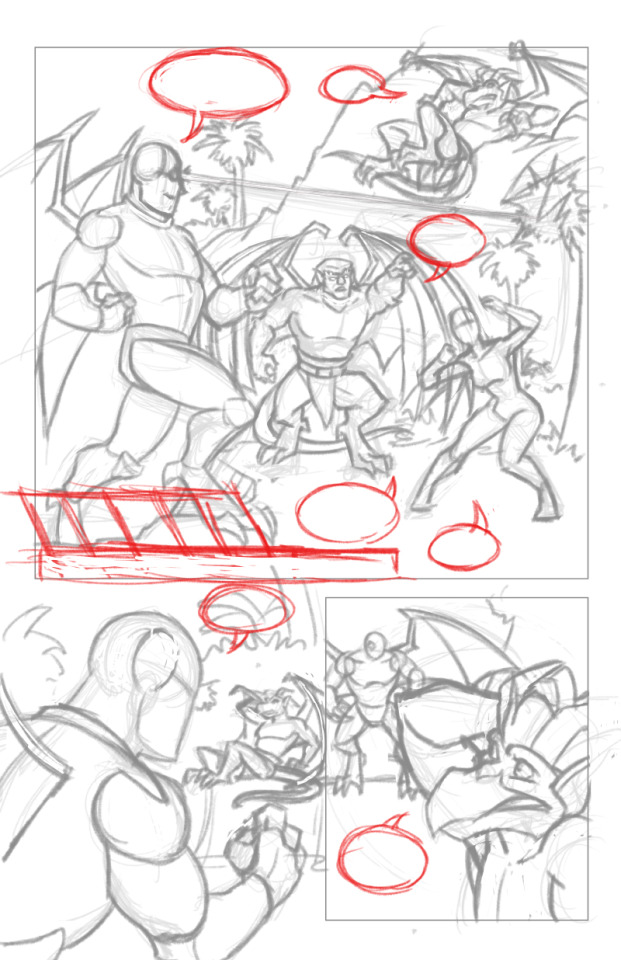
That means changing up camera angles, the size of your figures, and how much or how little background will be seen, etc. are not only paramount to the success of how each panel reads, but the page as a whole. Too -- you’re going to have to keep things like margins, gutters, safe areas and where text boxes and word ballons will fit, in mind. I'll get into more detail about all that in future posts, I’m sure... But for now, here's what my process has been once I finally had digital "breakdowns" of the art and how it would all lay out on a page.
My first stop was the UPS Store, to get some 11"x17" prints of my digital stuff, so it could be transferred onto comic board bristol (100lb. smooth bristol -- sometimes called cold-press board)

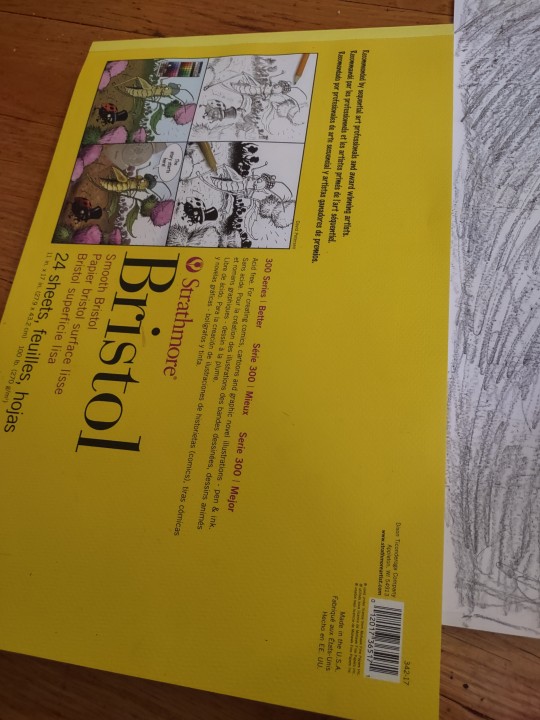
Using graphite, I coat the whole back-side of the page with scribbles. You can also use carbon paper, but if you can't find it or it's otherwise cost-prohibitive, just do the scribble method. I find things transfer about the same, if not a bit lighter when using graphite, and I tend to prefer the lines from my breakdowns be lighter at this point, anyway...

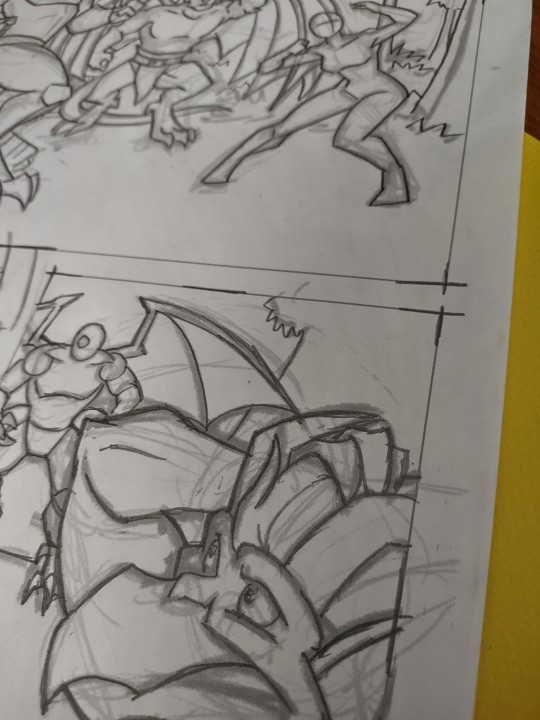
Next step is to line the prints up, cabon-side down, onto the bristol. I tape the paper in corners where there is no art needing traced with a little double-sided tape. Then, using my graphite pencil, I pain-in-the-buttingly go over each line to transfer it onto the comic board. I also trace the corners of my panels... I don't trace the whole edge since I'll be using a ruler to get those right on the final art, and really just need guidelines at this point.

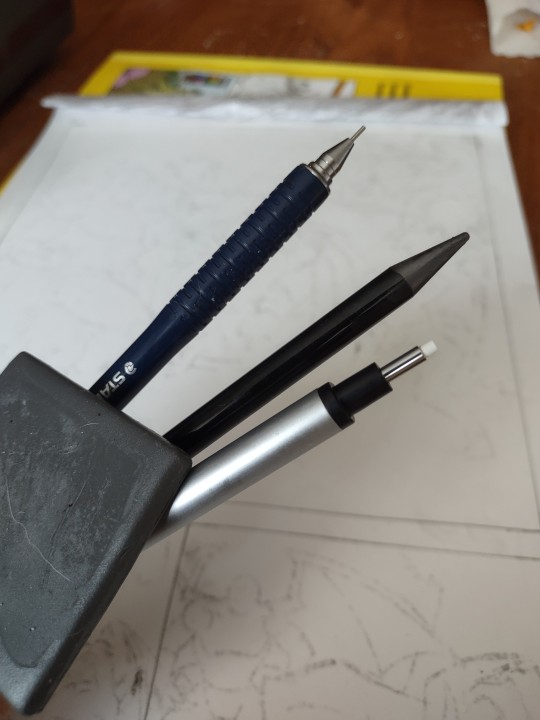
Once EVERY DAMN LINE is traced... You get a light transfer to work your final lines off of. Buuuut we're not quite done yet. Grab your work-pencil (I have been a fan of the good ol’ Staedtler Mars pencils with 0.5 lead since the dawn of time), graphite, gum eraser and fine-point eraser, because we’re going to be doing some light detail work on those breakdowns.
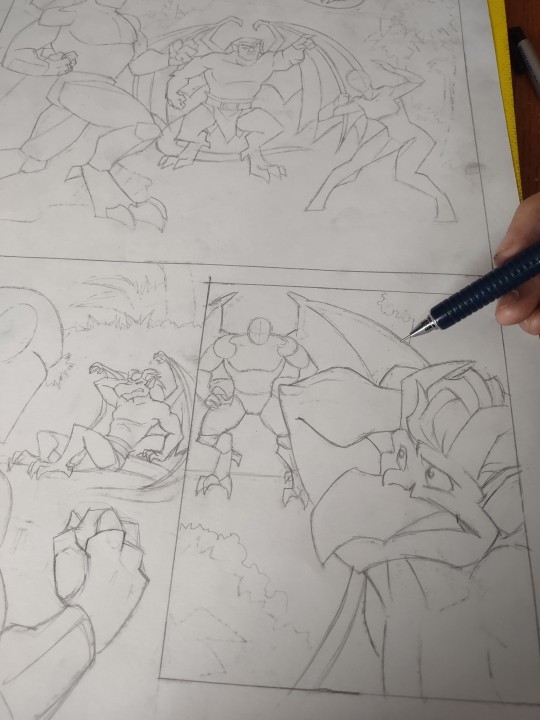
The final phase of this process is to go in and lightly re-draw the transferred breakdown lines. try to keep things light as you work. Smudges are the bane of a penciller’s existence and I sometimes work with a sheet of paper under my palm as I begin to work on the bristol, to keep things from smearing around. Once I’ve got my lines covered to a point that I could work off of them without looking at my digital copies to figure out what the heck I was even drawing, the page is ready for the final pencils.
If I was doing the inking for these pages, and (perhaps most importantly) I had an editor who trusted me, I might even be bold enough as to go in and start doing that, to save time. But a pencilling portfolio is hardly the place to show off my inking abilities, so we’ll leave the process right here, for now.
Join me next time as I do finished pencil work on these gargs!
#comic book stuff#how to comic book#my process#comic book design#layout#more than you ever cared to give a crap about
13 notes
·
View notes
Text
Environmental Sustainability in Advertising Practices
Introduction
Environmental sustainability has become an increasingly pressing issue in today's society, prompting businesses across industries to adopt more eco-friendly practices. In the advertising industry, there is a growing awareness of the environmental impact of campaigns and a shift towards more sustainable approaches. This article explores the importance of environmental sustainability in advertising practices and strategies for minimizing the industry's ecological footprint.
1. Sustainable Sourcing of Materials
One of the primary ways advertising practices can contribute to environmental sustainability is through the sourcing of materials used in print and production. By opting for recycled or sustainably sourced materials for printed materials such as brochures, flyers, and packaging, advertisers can reduce the demand for virgin resources and minimize the environmental impact of their campaigns. Additionally, choosing materials that are easily recyclable or biodegradable helps to reduce waste and promote circularity in the production process.
2. Digitalization and Paperless Practices
The transition towards digital advertising formats and paperless practices is another significant step towards environmental sustainability in advertising. Digital advertising eliminates the need for printed materials altogether, reducing paper consumption, ink usage, and waste generation. Embracing digital platforms for marketing campaigns, such as social media, email marketing, and online banners, not only reduces environmental impact but also offers greater flexibility, reach, and targeting capabilities for advertisers.
3. Energy-Efficient Production Processes
Advertising agencies هزینه طراحی کاتالوگ and production studios can prioritize energy-efficient practices in their operations to minimize their carbon footprint. This includes investing in energy-efficient lighting, equipment, and technology, as well as optimizing workflows to reduce energy consumption and waste. By adopting sustainable energy sources, such as solar or wind power, advertising firms can further reduce their environmental impact and contribute to the transition towards renewable energy.

4. Ethical and Responsible Messaging
Environmental sustainability in advertising extends beyond production practices to encompass the messaging and content of campaigns. Advertisers have a responsibility to ensure that their messaging is truthful, ethical, and aligned with sustainable values. Greenwashing, or misleading consumers with false or exaggerated claims of environmental friendliness, should be avoided. Instead, advertisers should focus on genuine sustainability initiatives and transparent communication with consumers about their environmental efforts and impact.
5. Collaboration with Sustainable Brands and Causes
Collaborating with sustainable brands and supporting environmental causes is another effective way for advertisers to promote environmental sustainability in their campaigns. By partnering with eco-conscious brands and organizations, advertisers can align their messaging with sustainable values and amplify their impact. Co-branded campaigns and cause-related marketing initiatives raise awareness about environmental issues and inspire consumers to support brands that prioritize sustainability.
6. Measurement and Reporting of Environmental Impact
Measuring and reporting the environmental impact of advertising practices is essential for accountability and continuous improvement. Advertisers can track key metrics such as carbon emissions, energy consumption, waste generation, and resource usage throughout the production and distribution process. By transparently reporting on their environmental performance, advertisers demonstrate their commitment to sustainability and provide stakeholders with valuable insights into their efforts to minimize environmental impact.
Conclusion
Environmental sustainability is an increasingly important consideration in advertising practices, as businesses and consumers alike recognize the urgent need to address climate change and environmental degradation. By adopting sustainable sourcing practices, embracing digitalization and paperless practices, prioritizing energy-efficient production processes, ensuring ethical messaging, collaborating with sustainable brands and causes, and measuring and reporting environmental impact, advertisers can minimize their ecological footprint and contribute to a more sustainable future. As environmental consciousness continues to grow, integrating sustainability into advertising practices is not only ethically responsible but also essential for maintaining relevance and competitiveness in the evolving marketplace.
0 notes
Text
Aluminum bottles are an innovative and sustainable packaging solution
Firstly, the aluminum bottle is 100% recyclable, making it an eco-friendly alternative to traditional packaging materials. Aluminum can be recycled infinitely without losing its quality or performance, making it a valuable resource in the circular economy. In contrast, many other packaging materials can be difficult or impossible to recycle, leading to significant waste and environmental damage.
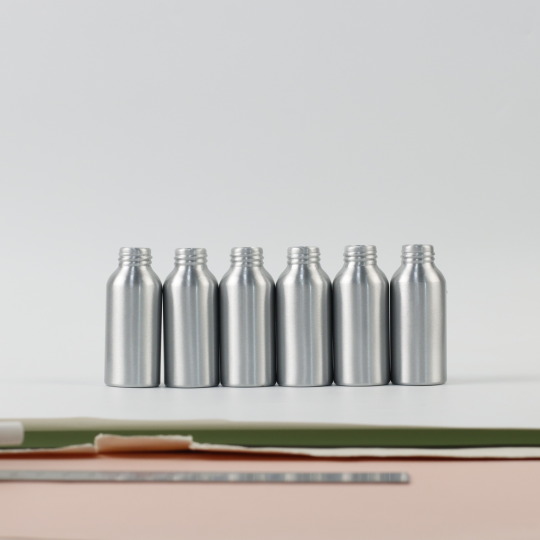
Secondly, the aluminum bottle is lightweight and durable, making it an ideal choice for transportation and storage. It can protect the contents from external factors such as light, moisture, and air. Furthermore, its light weight makes it a more energy-efficient option for transportation, reducing the carbon footprint of the product.

Thirdly, the aluminum bottle is aesthetically pleasing and customizable, making it an excellent marketing tool for brands. The surface of the bottle can be decorated with various printing techniques, allowing brands to create unique and eye-catching designs that stand out on store shelves. This feature is particularly important in the wine industry, where branding and presentation are key factors in consumer choice. The ability to create striking designs using eco-friendly materials is a significant advantage for brands seeking to differentiate themselves in the market.

Fourthly, aluminum is one of the most energy-efficient materials to produce, requiring only 5% of the energy needed to produce new aluminum compared to the energy needed to create virgin aluminum. This makes the production process of aluminum bottles more sustainable and cost-effective in the long run. In addition, aluminum can be recycled infinitely, creating a closed-loop system that conserves resources and reduces waste.
Lastly, aluminum bottle is the first wine in Argentina to use an aluminum bottle in the well-known wine industry. This demonstrates the brand's commitment to innovation and sustainability, as well as their willingness to lead the way in introducing new and more eco-friendly packaging solutions to the market. By adopting this new packaging format, EBI is taking a bold step towards reducing the environmental impact of their products while also setting a positive example for other brands to follow.
0 notes
Text
Elevating Networking with Smart Business Cards

In today’s world connection is very important for running any kind of business. This is why you will see a great rise in demand for smart business cards in this digital world. But what is a smart business card and why is it so important in business networking? Let’s dive deeply and learn how to elevate your networking skills with such a card.
The Need For Smart Business Cards
For a long time, exchanging paper cards was the norm when two professionals met. However, these paper cards came with many limitations. To start with, the cost of printing them was not low, and if the person left a job, cards needed to be printed again for a new appointee. Plus, most of the time, these cards ended up in trash cans or kept until forgotten. People didn’t have any control or knowledge over who saw their paper business cards or if they did any follow-up after seeing their cards.
The Rise Of Smart Business Cards
It is only the rise of smartphones in the last decade that gave rise to the demand for business cards that could be sent through a smartphone. The main technology behind these cards is NFC technology which is now present in almost all phones used worldwide. NFC stands for Near Field Communications in which data is transmitted through magnetic field induction when two NFC-enabled devices are in close proximity to each other. This technology is present not only in smartphones but also in laptops, tablets, smartwatches as well as payment cards. An NFC-enabled smart card can not only be transmitted through NFC technology but can also be read through the scanning of a QR card. The technology is very affordable, and easy to use, which makes it the best choice for smart business cards worldwide.
Why Smart Cards Can Elevate Your Networking Game
First impressions are very important for any businessman and an NFC smart card can help you establish a great image instantly. It is a great interactive and dynamic way to let the other person know about not just your business, but also other information like your LinkedIn profile and more. So, let’s see some of the other reasons why smart cards are now every professional's best friend.
1. Instant digital connection
Networking is all about connecting with the other person and NFC-enabled smart cards can do that in an instant. No need to save information from a paper card, with this card all your information is saved instantly in the receiver’s phone or other devices.
2. Real-time update
Did your phone or address change? Then no need to redo a whole bunch of paper cards; just update the change in your smart card. People who have received your card will get this update automatically.
3. Data analysis and analytics
As said before, you never know what happened with your paper card. But with digital or smart cards, you can know who saw it, who clicked the link and also how long or how many times they viewed the card. This data can then be used for further communication and business decisions.
4. Use multimedia to showcase your business
The biggest drawback of paper cards is that they are two-dimensional and static, with just text and graphics. But smart business cards allow you to go beyond just text and graphics. You can include a short video of your business, or a link to your website or your social media account.
5. Environment-friendly
Digital solutions like this are not only convenient but sustainable as well. You cut down on paper waste and reduce your carbon footprint by going digital with your business cards. So, don’t forget to revolutionize your networking skills by going digital with smart business cards.
#smart business cards#Digital business cards#Business cards#Tapitag#NFC Card#NFC smart card#smart cards
1 note
·
View note
Text
5 Ways Printodome Compatible Cartridges Can Improve Your Printing Experience
In today's fast-paced world, printers have become indispensable tools in both homes and offices. From printing reports to family photos, the demand for high-quality prints is ever-present. However, navigating the plethora of printer brands and cartridges can often leave consumers feeling overwhelmed and confused. This is where Printodome steps in, providing expert guidance and cost-effective solutions to enhance your printing experience. Founded by Sandeep Arora, compatible cartridges offers compatible cartridges that not only save you money but also improve the overall printing process. Here are five ways Printodome compatible cartridges can revolutionize your printing experience:

Cost Savings Without Compromising Quality
Printodome compatible cartridges offer a budget-friendly alternative to expensive brand-name cartridges without compromising on quality. These cartridges are meticulously engineered to deliver crisp, vibrant prints that rival those produced by OEM cartridges. By choosing Printodome, you can significantly reduce your printing costs without sacrificing the professional quality you expect.
Reliable Performance and Consistency
One of the biggest concerns with third-party cartridges is their reliability and consistency. Printodome understands the importance of uninterrupted printing operations, which is why each compatible cartridge undergoes rigorous testing to ensure consistent performance. Whether you're printing a single page or a large batch of documents, you can trust Printodome cartridges to deliver consistent results every time.
Wide Compatibility Across Printer Models
Printodome compatible cartridges are designed to be compatible with a wide range of printer models from leading brands. Whether you own a Brother, HP, Canon, or Epson printer, chances are Printodome has a compatible cartridge for your specific model. This versatility eliminates the hassle of searching for the right cartridge and ensures a seamless printing experience regardless of your printer brand.
Environmentally Sustainable Solution
As concerns about environmental sustainability continue to grow, Printodome is committed to reducing its carbon footprint. By opting for Printodome compatible cartridges, you're choosing a greener alternative to traditional OEM cartridges. These cartridges are made from recycled materials and undergo eco-friendly manufacturing processes, making them a responsible choice for environmentally conscious consumers.
Dedicated Customer Support and Satisfaction Guarantee
At Printodome, customer satisfaction is paramount. Whether you have questions about cartridge compatibility or encounter any issues with your purchase, Printodome's dedicated customer support team is here to assist you every step of the way. Color Laser Cartridges Additionally, Printodome stands behind the quality of its products with a satisfaction guarantee. If you're not completely satisfied with your purchase, simply contact Printodome, and they'll make it right.
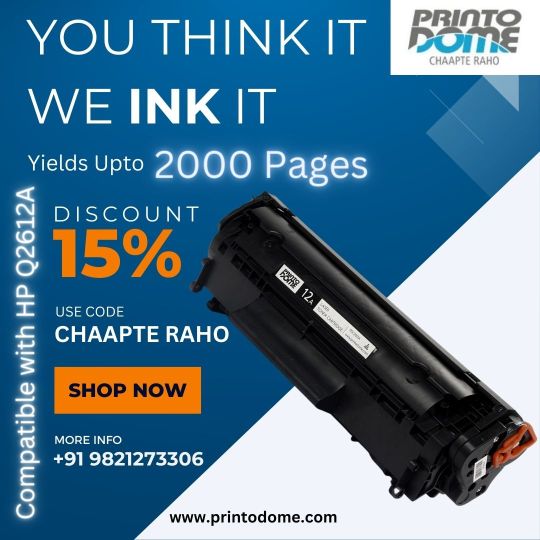
Conclusion
Printodome-compatible cartridges offer a cost-effective, reliable, and environmentally sustainable solution to enhance your printing experience. With their commitment to quality, compatibility, and customer satisfaction, Printodome is your trusted partner in optimizing your printing operations. Say goodbye to exorbitant printing costs and hello to superior prints with Printodome compatible cartridges
0 notes
Text
Eco-Friendly Practices of Forward-Thinking Translation Companies
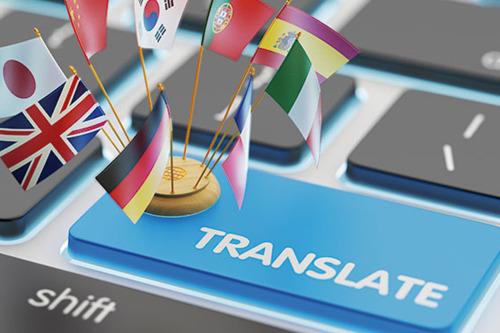
In a period where environmental awareness is becoming an important concern in all businesses, translation agencies are seeing the value of implementing eco-friendly methods. Since they are innovative companies, these businesses are incorporating sustainability into each step of their operations, from adopting digital workflows to lowering their carbon footprints. Let us explore the eco-friendly initiatives undertaken by translation companies that are championing sustainability in the world of language services.
The Environmental Impact of Traditional Translation Practices
Traditional translation processes often involve substantial paper usage, extensive printing, and transportation of physical documents, contributing to environmental degradation. As the demand for translation services continues to rise globally, the need for more sustainable practices within the translation industry becomes evident.
Eco-Friendly Practices by Translation Companies:
1. Digital Workflows and Paper Reduction:
Forward-thinking translation companies are transitioning to digital workflows, minimizing dependence on paper. Digitalization of documents, project management systems, and communication channels not only reduces paper consumption but also streamlines processes for greater efficiency.
2. Cloud-Based Collaboration:
Embracing cloud-based collaboration tools facilitates seamless communication among translators, project managers, and clients without the need for physical documents. This not only reduces the environmental impact but also enables real-time collaboration, enhancing overall productivity.
3. Energy-Efficient Technologies:
Translation companies are investing in energy-efficient technologies for their offices and data centers. This includes using energy-efficient computers, and servers, and adopting sustainable practices such as server virtualization to optimize energy consumption.
4. Sustainable Supply Chain Practices:
Forward-thinking translation companies are evaluating and optimizing their supply chains to reduce environmental impact. This includes choosing eco-friendly suppliers, minimizing packaging waste, and sourcing materials responsibly.
5. Remote Work Policies:
The shift towards remote work, accelerated by global events, has become a sustainable practice for many translation companies. This reduces the need for physical office spaces, everyday journeys, and related carbon emissions.
6. Green Certification and Compliance:
Translation agencies who have a commitment to sustainability look for and acquire green certifications as a way to show that they follow eco-friendly guidelines. Compliance with recognized environmental standards showcases their dedication to minimizing their ecological footprint.
7. Sustainable Partnerships:
Collaborating with partners who share a commitment to sustainability is a growing trend in the translation industry. This includes choosing language service providers and clients that prioritize eco-friendly practices and creating a network of like-minded entities.
8. Carbon Offsetting Initiatives:
Translation companies Birmingham proactively engage in carbon offsetting initiatives to counterbalance their carbon emissions. This involves investing in projects that reduce or capture greenhouse gases, effectively neutralizing the company's overall environmental impact.
9. Client Education and Awareness:
Forward-thinking translation companies actively educate their clients about the environmental impact of traditional translation practices and advocate for more sustainable approaches. This awareness-raising helps build a community of environmentally conscious stakeholders.
10. Virtual Events and Conferences:
In an industry where conferences and events play a significant role, translation companies are increasingly opting for virtual alternatives. This reduces the need for travel, lowering carbon emissions associated with attending physical events.
The Future of Sustainable Translation Practices
As the demand for translation services continues to grow, the role of translation companies in leading sustainable practices becomes even more crucial. By embracing eco-friendly initiatives, these forward-thinking entities are not only reducing their environmental impact but also setting a preference for a more sustainable future in the language services industry.
By adopting environmentally friendly methods, these businesses show their dedication to environmental protection and linguistic excellence, contributing to the development of a more strong and sustainable translation sector.
0 notes
Text
5 Reasons Why Commercial Printing in New Brunswick, NJ is Booming
Many businesses in New Brunswick, NJ are now turning to commercial printing to enhance their company image and branding. The commercial printing industry in New Brunswick has been growing over the years, with efficient and advanced printing services that provide quality print services for businesses. Local commercial printing companies such as Apex Printing are widely known for their exceptional customer service and high-quality prints, making them a popular choice among businesses. This article highlights 5 reasons why commercial printing New Brunswick NJ is booming.
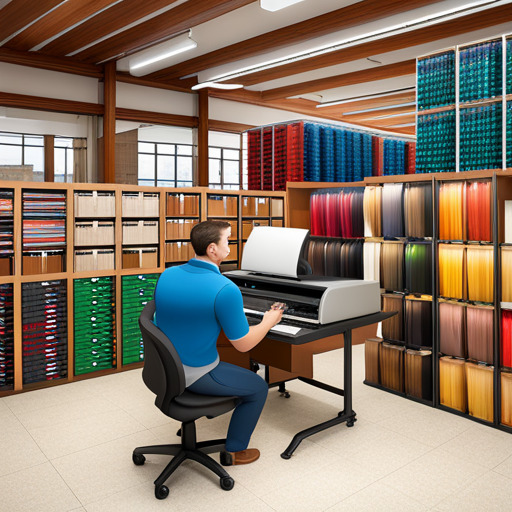
1. Quality Prints
Quality prints are essential to businesses as it plays a significant role in building brand identity. With the rise of modern printing technology, commercial printing companies can offer outstanding prints with excellent color quality. They also produce prints that meet the exact specifications of the company, ensuring that the end product is exactly what the company wants. With the use of high-quality printing techniques, companies can expect exceptional quality prints and maximized company image.
2. Speed of Service
Printing companies prioritize fast turnaround times to ensure that the client's needs are met, and deadlines are satisfied. Commercial printing companies invest in modern printing technology, which allows them to print at a much faster pace, reducing the turnaround time for prints. Customers can expect their prints to be ready much earlier than they estimate, even with bulk printing orders.
3. Customization
One of the advantages of commercial printing is the flexibility it offers businesses. Commercial printing companies offer various printing services ranging from custom designs to stock options, allowing businesses to get precisely what they need. This customization creates a sense of uniqueness and identity, helping businesses stand out from their competitors. Through customization, printing companies can produce prints that suit the company's goals and objectives.
4. Cost-Efficiency
One of the most important aspects of running a business is cost management, and commercial printing offers a cost-competitive solution to printing. Outsourcing printing needs to commercial printing companies reduces costs in many ways, including avoiding overheads such as maintenance costs, leasing expenses, and employee salaries. Bulk printing orders also receive cost benefits this means that companies can save money by producing prints at scale quantities.
5. Eco-Friendly Printing
One aspect that has been gaining traction is environmental consciousness. Many companies now look for ways to reduce their carbon footprint and promote eco-friendliness. Commercial printing New Brunswick NJ offer eco-friendly printing options that produce prints that are environmentally sustainable while ensuring the prints' quality. This eco-friendly printing method benefits both businesses and the environment.
Conclusion:
The commercial printing industry in New Brunswick, NJ is seeing significant growth due to quality prints, fast turnaround times, customization, cost-efficiency, and eco-friendly printing. These advantages make commercial printing increasingly relevant to businesses looking to enhance their brand identity. Local commercial printing companies in the area, like Apex Printing, are at the forefront of offering these services, providing exceptional customer service and high-quality prints to businesses in New Brunswick, NJ. Overall, the growth in commercial printing in New Brunswick, NJ, is a testament to the printing industry's relevance in the modern world and a solution worth considering for businesses looking to make their mark in the market.
#commercial printing services#printing services#card printing service#web development company#banner printing services#commercial printing bridgewater nj#commercial printing hillsborough nj#commercial printing new brunswick nj#commercial printing old bridge nj#commercial printing perth amboy nj
1 note
·
View note
Text
How School Management Software Can Help Schools Become More Eco-Friendly
In an era where environmental concerns have become paramount, schools are seeking ways to reduce their carbon footprint and operate in a more eco-friendly manner. The integration of technology, specifically school management software, has emerged as a pivotal solution in achieving these sustainability goals. This article explores the numerous ways in which school management software can help educational institutions become more eco-friendly, ultimately benefitting both the environment and the school community.

1. Paperless Administration
One of the most significant contributions of school management software to eco-friendliness is its ability to minimize paper usage. Traditionally, schools generated massive amounts of paperwork for tasks such as admissions, attendance, report cards, and communication. With a robust school management system in place, many of these processes can be automated and streamlined, reducing the need for physical documents. Schools can embrace paperless administration, saving trees and reducing waste.
2. Efficient Resource Allocation
Efficient resource allocation is a critical aspect of sustainability. School management software helps schools optimize resource allocation by providing insights into resource utilization. This data enables administrators to make informed decisions about energy usage, classroom scheduling, and other aspects of school operations, thereby reducing unnecessary consumption.
3. Energy Management
Energy consumption is a major concern for schools. School management software can play a pivotal role in energy management by providing tools to monitor and control energy use. It can include features like setting schedules for heating, cooling, and lighting systems, thereby reducing energy consumption during non-operational hours.
4. Reduced Travel
School management software offers parents and guardians the convenience of real-time access to their child's academic information. This not only improves communication but also eliminates the need for parents to physically visit the school for updates. This reduction in school-related travel helps decrease the overall carbon footprint.
5. Sustainable Communication
Communication is a vital part of school management, and email and messaging systems within the software can significantly reduce the need for paper memos and circulars. Furthermore, the software can offer a platform for virtual parent-teacher meetings, reducing the need for commuting and, in turn, reducing carbon emissions.
6. E-Waste Management
While technology adoption is a key element of becoming eco-friendly, it's essential to consider the responsible disposal of electronic waste (e-waste). School management software companies often have policies and partnerships in place for proper disposal and recycling of outdated equipment and software. This ensures that electronic waste is managed in an environmentally responsible manner.
7. Efficient Transportation Management
For schools with transportation services, school management software can help optimize routes and schedules, reducing fuel consumption and emissions. By tracking vehicle usage and performance, schools can make informed decisions to enhance the efficiency of their transportation services.
8. Environmental Awareness
Incorporating school management software into daily operations can raise awareness among students and staff about the importance of environmental sustainability. This awareness can lead to more eco-friendly habits both in the school and in the broader community.
9. Digital Learning Resources
School management software often includes features that enable the creation and distribution of digital learning resources. This not only reduces the need for printed textbooks and materials but also allows for more dynamic and interactive learning experiences for students.
10. Remote Learning
The COVID-19 pandemic underscored the importance of remote learning. School management software can support virtual classrooms and e-learning, which can significantly reduce the environmental impact of commuting and traditional brick-and-mortar school facilities.
11. Data-Driven Sustainability
School management software generates data that can be analyzed to identify opportunities for further eco-friendly initiatives. Schools can monitor their energy consumption, waste production, and other factors to continuously improve their sustainability efforts.
12. Reduced Administrative Workload
By automating administrative tasks, school management software frees up valuable time for teachers and administrators to focus on sustainability initiatives. Reduced administrative workload can lead to more time for planning and executing eco-friendly projects.
13. Transparent Reporting
School management software often provides detailed reporting capabilities, which are essential for monitoring sustainability efforts. Schools can use these reports to track their progress, set goals, and communicate their achievements to the school community.
Conclusion
Schools play a crucial role in shaping the future, and their commitment to environmental sustainability can have a lasting impact. The adoption of school management software offers an effective and efficient path to becoming more eco-friendly. From paperless administration to energy management, these systems provide the tools and insights needed to reduce the environmental footprint of educational institutions. In doing so, schools not only contribute to a more sustainable future but also set a valuable example for the students they educate. Embracing eco-friendly practices through technology is a win-win for schools and the planet.
0 notes
Text
Impact of textile and dye industry liquid and solid waste and amendments on potassium status of soil under sunflower crop
M.Parameswari
Department of Environmental Sciences, Tamilnadu Agriculture University, Coimbatore, Tamilnadu, India.
ARTICLE INFO
Article history:
Received: 13 September 2013;
Received in revised form:
15 December 2013;
Accepted: 24 December 2013;
__________________________________
Keywords
N- Nitrogen,
P- Phosphorus,
K- Potassium,
GR Gypsum recommendation,
ESP-Exchangeablesodium percentage.
ABSTRACT
Gypsum, pressmud, farm yard manure, ETP sludge were tried to ameliorate the textile and dye effluent polluted soil habitat, using sunflower (CO4) as a test crop. The sludge along with effluent irrigation added considerable quantities of cations (calcium, magnesium and sodium) to the soil system. Application of pressmud @ 5 t ha-1 along with 100 per cent GR + NPK reduced the soil ESP by 44.96 per cent. The heavy metal content were also reduced due to addition of pressmud. Higher microbial population was also observed under effluent irrigation than well water. Application of 100 per cent GR + pressmud @ 5 t ha-1 + NPK under effluent irrigation increased the crop growth, yield attributes (head diameter, head weight, seed test weight) and yield of sunflower in effluent polluted soil habitat. The yield under pressmud amended plots was 36 per cent higher over control. Reclamation and restoration of textile dye effluent polluted soil habitat is possible by leaching the soil with 100 per cent GR followed by application of pressmud @ 5 t ha-1 and recommended NPK.
Introduction
Textile industries plays important role in human civilization by providing cloths. Many environmental issues are associated with effluent of textile industries.The conventional textile finishing industry requires nearly about 100 l of water to process about 1 kg of textile materials6. Dyeing and printing process consume relatively largest amount of water during textile processes (Butani Naresh 2003). The textile and dye industrial sludge is reported to promote crop growth if added to the soil in quantities below the toxicity limits. Moreover, the land application of industrial sludge provides an effective and environmentally acceptable option of waste disposal to recycle valuable nutrients into the soil plant system (Parameswari and Udayasoorian, 2003) The potential utilization of such wastes can be assessed to some extent based on its composition. Most of the sludge have disadvantages like toxic constituents in the form of heavy metals, carcinogen, fluoride, cyanide etc. Proper recycling of this sludge in an integrated ecofriendly way has become the need of the day.
These sludge materials have been regarded as wastes that require disposal, but now there is a realization that as they are rich in calcium, sulphate, carbonate and potassium, it is worth recycling them for agriculture and other allied fields. Moreover, in order to avoid and reduce the pollution problems encountered by the textile and dye industries, these liquid and solid wastes can be scientifically utilized for agriculture. Hence, the present study was proposed to find scientific ways and means of utilizing the liquid and solid waste of the textile and dye industry for agriculture. Considering the economic importance of the sludge of the textile and dye industry and problems connected with liquid and solid wastes disposal, this study was under taken for assessing various management options for the integrated ecofriendly utilization of the liquid and solid wastes of the textile and dye industry. In the present investigation an attempt has been made to assess the impact of textile and dye industrial effluent on soil and crops. The wastewater from dye industry could successfully be used for irrigation it is possible to prevent river water pollution and also to augment already scarce irrigation water resources (Oblisami and Palaniswami, 1991).
Materials and Methods
A field experiment was conducted to assess the effect of dye effluent and sludge on soil fertility and productivity of sunflower. The treatment details are given below.
I1 – Well water
I2 – Treated textile and dye effluent
Treatments
T1 - Control, T2 - 50 per cent GR+ NPK, T3 - 100 per cent GR + NPK, T4 - 50 per cent GR+ Pressmud @ 5 t ha-1+NPK, T5 -100 per cent GR+ Pressmud @ 5 t ha-1+ NPK, T6 - 50 per cent GR+ ETP Sludge @ 5 t ha-1+ NPK , T7 -100 per cent GR+ ETP Sludge @ 5 t ha-1 + NPK, T8 - 50 per cent GR+ Farmyard manure @ 12.5 t ha-1+ NPK, T9 - 50 per cent GR+ Farmyard manure @ 12.5 t ha-1 +NPK
Fertilizer dose : 40 kg N, 20 kg P and 20 kg K ha-1
Design : FRBD Replications: Three
The field experiment was initiated at ETP-Senepiratti, Karur, Tamil Nadu. Calculated amount of the amendments as per the treatments including the textile and dye sludge were uniformly spread in the plots and ridges and furrows were formed. Sunflower seeds (CO4) were sown adopting a spacing of 60 x 45 cm. Top dressing of NPK was carried out and irrigated once in a week. Soil samples were drawn at different intervals of field experiment and analysed for various biochemical properties as per the methods described in Table1.
Plant biometric observations were recorded at vegetative stage, flowering stage and at harvest stage. Five plants at random were selected from each plot and tagged. The observations plant height, plant girth and number of leaves were recorded the mean values were calculated. The plant height was measured from the ground level to the tip of the growing point and expressed in cm. Quality characteristics of yield attributes like single head weight (g), Head diameter (cm), 1000 grains weight: 1000 grains of each representative samples were recorded for each treatment and expressed in g. The experimental data were statistically scrutinized to find out the influence of various treatments on the soil properties and crop growth as suggested by Panes and Sukhatme (1955). The critical difference was worked out at five per cent (0.05) probability.
Characterization of effluent and solid waste from textile and dye effluent
Preparation of samples for analysis the sludge samples were shade dried, sieved through 2mm nylon sieve and stored in polythene bags. The samples thus prepared were analysed for their chemical properties (Table 1).
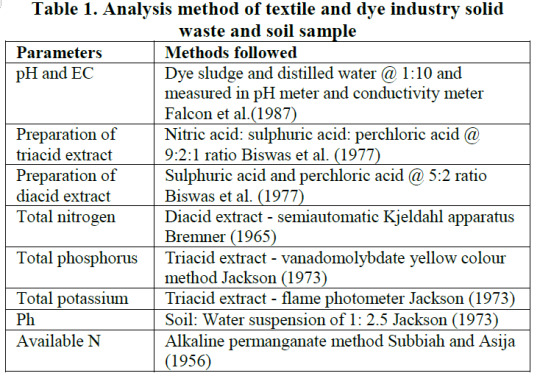
Results and Discussion
Field experiment was conducted at Senapirattai, Karur, Tamilnadu, India using sunflower as test crop to assess its phytoremediation efficiency in textile and dye effluent polluted soil habitat. The results obtained from the field study are discussed here under. The pH of the experimental soil was 8.10 with EC of 3.30 dS m-1. The soil available N, P, K contents were 136, 12.9 and 262 kg ha-1, respectively. The organic carbon content was 0.60 per cent. It also had an appreciable amount of exchangeable Ca, Mg, Na and K with the values of 13.3, 9.50, 28.6 and 0.90 cmol (p+) kg-1, respectively. The soil had maximum bacterial population than fungi and actinomycetes. Addition of solid wastes and continuous effluent irrigation were reported to be advantageous to maize crop ecosystem (Parameswari and Udayasoorian, 2003).
Characteristics of textile and dye effluent and well water used for irrigating the experimental crop
The effluent used for the study had a pH of 6.23 with dull blue colour and EC of 3.28 dS m-1. It also had an appreciable amount of nitrogen (32.0 mg L-1), phosphorus (28.00 mg L-1) and potassium (1.61 mg L-1). The Ca, Mg and sulphate contents of the effluent were 178, 54.7 and 234 mg L-1, respectively. The characteristics of the well water used for irrigation recorded a pH of 7.55, EC of 1.56 dS m-1. The Ca and Mg contents were 80 and 28.6 mg L-1, respectively.
Initial characteristics of sludge and amendments used for the field experiment
The textile and dye sludge used for the study had a pH of 8.60 and EC of 4.58 dS m-1. The total nitrogen, phosphorus and potassium contents were 0.18, 0.12, 1.57 percentages respectively. The Ca, Mg, sulphate and carbonate content of the sludge were 17.35, 1.85, 18.6 and 16.34 percentages, respectively. The pH of the press mud, farmyard manure and gypsum were 7.12, 7.38 and 9.78, respectively, whereas the EC values were 1.65, 0.74 and 1.85 dS m-1, respectively. Among the amendments, pressmud had the highest N, P, K of 0.98, 1.87, 0.72 per cent, respectively whereas gypsum recorded 0.18 per cent of phosphorus and the highest Ca and Mg contents of 16.58 per cent and 3.38 per cent, respectively. The lowest Ca and Mg of 1.05 per cent and 0.32 per cent were recorded in farmyard manure.
Soil characteristics as influenced by effluent and amendments
The soil pH values at vegetative stage ranged from 7.53 to 8.25. During flowering stage it ranged from 7.92 to 8.52 and at harvest stage it varied from 8.07 to 8.67. The soil reaction increased progressively till at the end of harvest stage. It might be due to continuous effluent irrigation, which was alkaline in nature. Similar increase in soil pH due to effluent irrigation was reported by Vasconcelos and Cabrel (1993). The increase in soil pH due to amendment addition, in the present study corroborates with the findings of Olaniya et al. (1991).
Soil pH increased with advancement of crop growth in the effluent irrigated treatments while under river water the change was not at a considerable level. Similar viewpoints were also expressed by Malathi (2001). The7yu mean EC of soils ranged from 3.37 to 4.23, 3.08 to 4.17 and 2.92 to 4.09 dS m-1 at vegetative, flowering and at harvest stages, respectively. The treatment combination I2T1 recorded the highest EC value and the lowest value was observed in I1T3 at harvest stage. The higher EC in effluent receiving treatments might be due to salt accumulation because of continuous effluent irrigation. The increase in EC might be due to higher Ca and Mg content of sludge. These findings were in line with that of Hameed and Udayasoorian (1999). Effluent irrigation plus 20 t ha-1gypsum recorded maximum germination percentage, shoot length, dry weight of sugar cane settling, and increase in content and uptake of N, P, K, Mn and Zn and also the Fe and Cu (Oblisami and Palanisami, 1991).
Available potassium (K)
Irrigation with effluent increased the available K content. Among the treatments, T5 recorded the maximum mean value (317 kg ha-1) and minimum value of 263 kg ha-1 was observed in T1 (farmers practice) at vegetative stage. The higher amount of potassium in the treated effluent irrigated plots might be due to addition of K present in the effluent. This is also in harmony with the findings of Prabu (2003) who observed an increase in available K status due to mineralization of organic matter. Favourable effect on available K content of soil due to ETP sludge addition was reported by Dhevagi (1996). The available nutrient status decreased at reproductive stage indicating the absorption and conversion of nutrients into plant biomass. (Parameswari and Udayasoorian, 2013) who reported that there was a gradual reduction in available nutrients under effluent irrigation along with solid waste addition. The highest rate of sludge application to soil produced maximum dry matter in maize (Rajarajan, 1978).
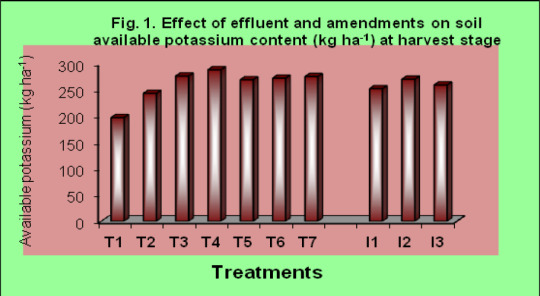
Conclusions
The polluted soil was reclaimed with gypsum and organic amendments irrigated with effluent and well water. The continuous effluent irrigation had increased soil pH, EC and organic carbon content along with amendments when compared with well water irrigation. The available nitrogen, available phosporus and available potassium were influenced in effluent irrigated soils along with amendments, and the best performance was recorded in 100 per cent GR + pressmud @ 5 t ha-1 + NPK.
References
[1] Butani Naresh, Jobanputra Jaydip, Bhatiya Prabhat, Patel Rajkumar 2013. Recent Biological Technologies for Textile Effluent Treatment., Int. Res. J. Biological Sci .Vol. 2(6), 77-82
[2] Biswas, T.D., B.L Jaian and S.C. Maldal. 1977. Cumulative effect of different levels of manures on the physical properties of soil. J. Indian Soc. Soil Sci., 19: 31-37.
[3] Bremner, J.M. 1965. Inorganic forms of nitrogen. In: Methods of Soil Analysis. Part 2. C.A. Black (Eds.), Am. Soc. Agron. Inc. Wisconsin, USA, pp. 1170-1237.
[4] Dhevagi, P. 1996. Studies on the Impact of paper mill effluent on agro-ecosystem. Ph.D. (Environmental Sciences) Thesis, Tamil Nadu Agric.Univ., Coimbatore.
[5] Falcon, M.A., E. Corominas, M.L. Perez and F. Perestelo. 1987. Aerobic bacterial populations and environmental factors involved in the composting of agricultural and forest wastes of the Conary Islands. Biol. Wastes., 20: 89-99.
[6] Hameed Sulaiman, S.M. and C. Udayasoorian. 1999. Metals in soil environment and the growth of Eucalyptus seedlings as influenced by paper mill wastes. Proc. Environmental Impacts of Metals. International workshop, Department of Environmental Sciences Tamil Nadu Agric. Univ., Coimbatore, March 22-23.pp 41-42.
[7] Jackson, M.L. 1973. Soil Chemical Analysis. Prentice Hall of India (Pvt.) Ltd., New Delhi.pp.24-36.
[8] Kale, S.P. 1981. Processing and utilization of pressmud cake as a source of enriched manure, Ph.D. Thesis, IARI, New Delhi, India.
[9] Malathi, G. 2001. Impact of Treated Pulp and Paper Mill Effluent on Vegetables – Soil Ecosystem. M.Sc. (Environmental Science) Thesis, Tamil Nadu Agric. Univ., Coimbatore .
[10] Oblisami, G. and A. Palanisami. 1991. Studies on the Effect of Paper and Sugar Factory Effluent on Soil Microflora and Agricultural Cropping System. Scheme Report. Seshasayee Paper Mill, Tamil Nadu Agric. Univer., Coimbatore, pp. 297-305.
[11] Olsen, S.R., L.L. Cole, F.S. Watanabe and D.A. Dean. 1954. Estimation of available phosphorus in soils by extraction with sodium bicarbonate. U.S.D.A. – Circ. p. 939
[12] Palaniswami, C. 1989. Studies on the Effect of Continuous Irrigation with Paper Factory Effluent on Soil Properties and on Sugarcane Nursery and Main Crop and Development of Techniques for Clarification of Effluent. M.Sc. (Ag.) Thesis, Tamil Nadu Agric. Univ., Coimbatore.
[13]Panse, V.G and P.V. Sukhatme. 1985. Statistical methods for Agricultural workers. I.C.A.R. Publ., New Delhi, P.359.
[14 Parameswari, M and C.Udayasooriyan, 2003. Influence of different concentration of textile and dye effluent and sludge on soil fertility, growth and yield of maize crop. J. Environ. Sci. and Sust. (JESS) Vol.1 (2): 61 – 65, 2013.
[15] Ponniah, C. and K. Ramasamy. 1999. Impact of paper mill effluent irrigation in fodder grass soil ecosystem : Proc. National Symposium on Bioremediation of polluted habitats. Department of Environmental Sciences, Tamil Nadu Agric. Univ., Coimbatore, pp. 62-67.
[16] Prabu, P.C. 2003. Bioremediation of paper mill effect polluted habitat. Ph.D., (Env. Sciences) Thesis, Tamil Nadu Agric. Univ., Coimbatore.
[17] Rajarajan, A. 1978. Studies on the Effect of Sewage Wastes on Soil Chemical Properties on Germination, Dry Matter Yield and Nutrient Uptake of Crops. M.Sc. (Ag.) Thesis, Tamil Nadu Agric. Univ., Coimbatore.
[18] Stanford, S. and L. English. 1948. Use of flame photometer in rapid soil tests of K. Agron. J., 41: 446-447.
[19] Subbiah, B.V. and G.L. Asija. 1956. A rapid procedure for estimation of available nitrogen in soils. Curr. Sci., 25: 259 -260.
[20] Vasconcelos, E. and F. Cabrel. 1993. Use and environmental implications of pulp mill sludge as organic fertilizer. Environ. Pollution, 80: 159-162.
[21] Veena, V., A.K. Sahu and K. Patel. 1992. Pulp and paper mill sludge in agricultural soil amendment and effluent water for irrigation. Sharanpur. IPPTA 4: 112-121.
1 note
·
View note
Text
youtube
#ecoprint #naturaldye #bundlesecoprint
The Secret of Ecoprint Technique (Full Tutorial) Part 1 • The Secret Recipe of E...
The Secret of Ecoprint Technique (Full Tutorial) Part 2 • The Secret of Ecoprint...
So hi, im roman, FINALLY todays video id like to show you the secret recipe how i made ecoprint on fabric, how i create a beautifull print on it, a secret why and how the leave or the flower leave their shape beautifully, this is base on my exploration, maybe the weather, ph level of water and so many factor will affect the result, but you can try this recipe.
This video is maybe long, but i dont want to cut the video so i will show you every step of the process of the textile making.
Step by step :
1. Choose the best fabric/materials
2. Clean the fabric (Scouring), i have 2 ways to clean deeply the fabric (2 method)
3. Preparing the fabric (Mordanting), 2 step to make your fabric is ready to dye.
4. Selection of the plants.
5. Bundles and Steam Technique.
6. I love you.
1. Fabric / Materials
The first is the most important before you making natural dyes, selection of fabric or material, because we work on natural dyes, natural things, so make sure the fabric that u ll be use is from nature also, like linen, cotton, or maybe silk.
2. Scouring
The second, is to scoured the fabric, what is scouring means? Scouring refers to thoroughly washing or deep cleaning the fabric, to remove residue or residual chemicals on the cloth from the factory when fabric making.
This is one factor of success in achieving strong color on natural dyes, is to start with completely clean fabric. Does this mean fabric washed in washing machine? No! We think the washer gets our clothes totally clean but it honestly does not. That is why, to get a good even coverage with your dyes, it is very important that you deep clean your cellulose fabric such as cotton, linen, bamboo, or maybe silk.
For me, this is my method, i have 2 ways to scour the fabric, the first is boil the fabric on hot water with some soda ash about 20 minutes, or if you dont have a soda ash you can use any detergent, but i recomend a soda ash and TRO (Turkish Red Oil). Boil for 20 minutes and ready for the next step, but if you patient enoght i have another tips, another methos, that is leave your fabric on soda ash mix with water for about a night or a couple night, until the fabric is clean and dry it.
3. Mordant
The 3rd step, next for this step is to mordant the fabric, what is mordant means? Mordant is like to prepare your fabric for natural dyes, mordanting process make your fabric good enought to sticking the tanin (the substance in plants that produces color/natural dyes) from leaves and flower. More rich the tannins on a plant, more strong the color will be.
There is 2 step of mordanting the fabric,
Mordant First step, recipe (you can re-adjust composition) :
Aluminium Sulfate (Tawas)
Iron Sulfate (Tunjung)
Baking Soda
Vinegar
Mix all the ingredients with water
Dry the fabric.
Note : be careful with fragile fabric like silk, dont add too much recipe
Mordant Second step, recipe :
Calcium Carbonate (lime betle/kapur sirih)
Mix with water
Ready to print or you can dry it and keep for print when you need. (Make sure make it wet again the fabric before you print)
For the precise composition please follow and dm me on instagram / roman.muhtar ✨
4. Selection of Plant
More rich the tannin on a plant, more strong the color will be.
What i choose :
Hibiscus flower (Bunga sepatu)
Bidens pilosa (Dom dom an/babadotan)
Acalypha (Daun Ekor Kucing)
Vernonia (Daun Afrika)
And many more you can explore
5. Bundles Ecoprint
Here‘s tutorial • Bundle Ecoprint Tutori...
6. Thanks for watching, i love you!!!
Lets be friend
#Roman Nuansa#solarpunk#how to#how to eco print#how to bundle dye#diy#do it yourself#eco print#bundle dye#natural dye#natural materials#fabric#natural fabrics#Youtube
4 notes
·
View notes
Text
The Unsung Heroes of the Modern Office: Office Printers
In the fast-paced world of modern offices, where digitalization has taken over, office printers may seem like relics of the past. However, these machines, often overlooked and taken for granted, remain the unsung heroes of the workplace. In this blog, we'll explore the enduring importance of office printers and why they continue to be essential tools in the contemporary office environment.
1. Versatility at Your Fingertips
Office printers have come a long way from their basic, monochrome predecessors. Today's models offer a wide range of features, including color printing, scanning, copying, and even faxing capabilities. This versatility means that you can handle a variety of tasks without having to invest in multiple devices.
2. Tangible Documents in a Digital World
In the age of digital documents and cloud storage, one might question the need for physical copies. However, there are situations where hard copies are still indispensable. Contracts, reports, presentations, and marketing materials often require a tangible format for legal, practical, or promotional purposes. Office printers bridge the gap between the digital and physical worlds, ensuring you have the documents you need when you need them.
3. Time and Cost Efficiency
Imagine the time and effort saved when you don't have to outsource your printing needs. Office printers allow you to print documents in-house, reducing turnaround times and minimizing costs associated with external printing services. Plus, the ability to print on-demand means you can update and customize materials without waiting for a print shop to accommodate your requests.
4. Confidentiality and Security
While digital files can be vulnerable to hacking and unauthorized access, printed documents offer an added layer of security. Office printers equipped with secure printing features enable you to release documents only when you're physically present at the machine, safeguarding sensitive information from prying eyes.
5. Environmental Considerations
Modern office printers are designed with environmental sustainability in mind. Energy-saving features, duplex printing, and efficient toner usage reduce the carbon footprint of your office. By minimizing waste and energy consumption, you contribute to a greener workplace.
6. The Human Touch
Sometimes, there's no substitute for the personal touch that a physical document provides. Whether it's a handwritten note on a memo or a signed contract, printed materials carry a unique sense of authenticity and importance. They can enhance communication and convey professionalism.
Conclusion: A Vital Role in the Modern Workplace
While digitalization has revolutionized the way we work, office printers remain essential tools that complement our digital workflows. Their versatility, efficiency, security, and environmental benefits make them indispensable in today's office environment. So, the next time you hit the print button, remember that your office printer is far from obsolete; it's a valuable asset that continues to play a vital role in your everyday work life.
Reference Link: https://azbusinesssytems.com/
1 note
·
View note
Text
Revamp Your Interiors with Elegance: Discover India's Trendiest Metal Wall Decor
Adding a touch of classiness has never been easier with the latest collection of metal art for wall decor. From sleek and modern designs to intricate and ornate patterns, metal wall art stunning pieces are the perfect addition to any home or office space. Delve deeper into the world of metal wall decor and discover how it can transform your interiors.
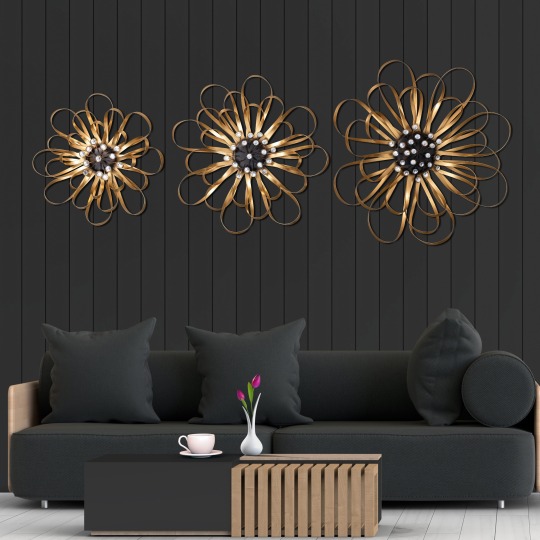
6 Tips On Unveiling The Trendiest Metal Wall Decor In India
If you’re looking for a unique way to add some personality to your home, metal wall decor might just be the answer you’re looking for. India is known for its intricate and diverse art, making it an ideal destination to explore the trendiest metal art for wall decor designs from home decoration stores online. From minimalist geometric shapes to bold floral motifs, there’s a range of styles to choose from metallic wall decor. Here are some tips to help you discover the perfect piece for your home.
1. Incorporate Cultural Elements
Different metals hold cultural significance across different societies and communities. Consider purchasing metal wall decor from home decoration stores online like Dekor Company that represents your cultural heritage. For instance, metal like copper is an important metal in Indian and Mexican cultures.
Cultural motifs and symbols are always popular when it comes to decorating homes with wall art. For instance, a lot of native American metal art for wall decor will have intricate tribal patterns that are used in weaving and other crafts, such as beadwork.
2. Choose Sustainable Options
Pieces made from upcycled metals like aluminum, copper, brass, or stainless steel, will not only look stunning but also reduce the carbon footprint of their production. For example: copper mosaic wall tiles made from recycled copper wire.
When selecting a metal wall decor piece from home decoration stores online, make sure to choose one with a non-toxic coating. This will ensure that your piece is not only safe for your family but also has minimal impact on the environment. Examples of such pieces include: steel butterflies with powder-coated finish
3. Blend Modern and Traditional
Choose a metallic wall decor like Palmero Floral Arrangment Metal Wall art Panel design that combines traditional and modern elements. For example, a metal wall hanging that features a classic geometric pattern in a sleek, contemporary finish would be a great option.
If you want to mix modern and traditional styles in your metal wall decor, select a piece from home decoration stores online like Dekor Company that features both neutral and bold hues. This way, you can incorporate the best of both worlds. A good example of this would be a metal wall sculpture with an intricate design that features gold and black colours.
4. Experiment with Colours
If you have a navy blue sofa in your living room, you could hang a metal wall art piece that features rust-orange tones to create a warm and cozy atmosphere. Alternatively, you could choose a piece with teal and coral shades to create a playful and summery vibe.
For a neutral-coloured bedroom, you could hang a metal wall sculpture in shades of cream, taupe, and beige to add texture and depth to the space. Another option is to choose a metal wall art piece in shades of gray, which will add a contemporary touch to any room.
5. Customization Options
When shopping for metal wall decor, consider looking for pieces that have interchangeable elements that you can swap out over time. For example, a set of metallic wall decor frames with various art prints or photographs that you can change with the seasons or whenever you feel like refreshing your decor.
Different finishes like Floret Vertical frame Metal Wall Art Panel – Gold Foil Work can completely transform the look of your metal art, so take the time to find the right one that suits your taste. For instance, you might opt for a sleek and modern polished finish for an abstract metal sculpture or a rustic patina for a vintage-inspired wall hanging.
6. Consider Functional Art
One great example of functional metal wall decor is a magnetic metal board. These decorative boards can be used to display artwork, photos, and important notes with the help of magnets.
Consider the purpose of the metal wall decor and how it can serve a functional purpose in your space. For example, a metal wall shelf with decorative elements can provide both storage and a unique decorative accent.
Latest 5 Trends In Metal Wall Decor
Metal wall decor is becoming more popular as people seek out unique and bold ways to spruce up their homes. Here are the latest 5 trends in metal wall decor that you don’t want to miss out on.
1. Abstract Geometric Sculptures
Combining clean lines and intricate shapes, metal wall art like Montana Geometric Metal Art Panel offer a contemporary and visually captivating aesthetic. Arrange them as a focal point or create a gallery-like display to infuse your space with modern sophistication and eye-catching visual interest.
2. Botanical Metal Art
Crafted with intricate precision, pieces like Shantou Botanical Elements Metal Wall Art Panel bring the outdoors indoors, fostering a sense of tranquility and connection with nature. The trend’s versatile designs, ranging from delicate leaves to vibrant florals, offer a unique blend of aesthetics and natural charm that elevates any space.
3. Artisanal Handcrafted Metalwork
Each creation of this trend carries a distinct touch, infusing spaces with authenticity and character. The intricate detailing and craftsmanship reflect dedication, elevating interior decor to a level of artistry that captures both the eye and the soul.
4. Industrial Minimalism
This trend offers an understated yet impactful way to introduce texture and character to spaces. Opt for neutral colour palettes and understated finishes like brushed steel or matte black. Arrange pieces like Lustrous Metallica Metal Art Wall Decoration with intentional spacing to create a sense of openness while highlighting the stark beauty of industrial materials.
5. Customizable Typography
You can personalize your space with meaningful quotes, names, or phrases in stylish metal designs with this trend. Select fonts, sizes, and finishes that resonate with your decor and values. This trend offers a unique opportunity to infuse your interiors with personalized statements that reflect your personality and create a truly bespoke ambience.
Incorporating metal wall decor is an effortless way to add sophistication to your space. With India’s trendiest designs available with Dekor Company, elevate your interiors to the next level and impress your guests.
Source: Revamp Your Interiors with Elegance: Discover India's Trendiest Metal Wall Decor
#Dekor Company#wall decor#home decoration online#Metal Wall art Panel#metal wall decor#metal wall art#metal art for wall
0 notes
Text
Friday, August 11th: Senior (Account Executive) Skip Day
I'm sure it's just the calm before the influencer storm, but I well and truly was not assigned a damn thing to do today. This is likely due to Halle's tenure as a freelancer ending when August comes to a close, which is fucking fine by me. Has anyone in the history of time done less to make over $1500?
Actually sadly yes, probably. But I refuse to get too comfortable or too proud of myself until I actually start doing something. It reminds me of when I worked for Sony at 23, literally being paid to essentially print things and sit there all day when I was 22. Big companies just kind of have fuck-you money to throw at useless cogs. Like yes, technically: I drafted contracts and edited creative concepts for the brand, and drafted a list of Influencers for review. But that shit isn't difficult. There are templates and processes and like 4 extra hours after that to just keep your Microsoft Teams on while you do your laundry.
You can be completely ineffective for like years before it even becomes a matter of review. Imposter Syndrome is currently in full effect or maybe I'm just realizing that no one is inherently more "worthy" or special than I am. Pleasantly though, my anxiety is at bay (which bay is still to be determined, but I'm comfortable.)
Either way, I'm online shopping! Currently rocking a two-piece black workout set with my black and white Asics and white scrunchie. It's around 4 in the afternoon and Makenna and I are just chilling on the couch and trying to lure her cat Blue from her room to the living room. She is currently very unsure even with treats on the table.
Today my Nike Run App plan is to go on a "Long-Run", which since I'm on an 8-week 5 K plan is legit just a mile. So I'm going to focus on speed. It's nice and overcast out so thankfully I won't die of heat exhaustion. Global warming has not been fucking around lately, Maui is currently on fire with over 55 people killed. Not that I'm comparing my getting hot in the summer to looming natural disasters. Or well, okay I guess I just did, but at least I'm running? Yesterday I did a recovery run at 9 miles per hour and then a 10-minute yoga stretching session.
Also read in "4000 Weeks" about the power of having your vacation or off time at the same time as others, as well as shared goals being a source of happiness. He specifically cited singing in choirs, which I completely remember and relate to from high school. The fact that I went to Iceland and Costa Rica to sing still surprises me sometimes and singing in a 1500-year-old church in 8 parts remains a religious experience in my heart. I've never been involved in a church or frankly into any hardcore doctrine, but I do miss feeling as though I were contributing in a real way to something important, beautiful, and bigger than myself. Something to think about.
In Jenny Slate's, "Little Wierds", the writing and stories are both poetic and silly. Also so relatable that I could cry. There are elements of nature, hope, despair, a 19th-century ghost woman at the seaside, and what I can only describe as vagina panic. She doesn't write like me at all and yet our souls have watched similar movies and gotten lost in similar forests.
In brighter news: The U.S. Department of Energy announced on Friday that it will spend $1.2 billion on the nation’s first two major carbon-capture facilities.
0 notes
Text
The construction industry has long relied on traditional marketing strategies such as print advertising and word of mouth. However, with the rise of digital technology, it's become increasingly important for construction companies to embrace digital marketing strategies to reach their target audience and increase brand awareness.
Here are five must-have digital marketing strategies for the construction industry:
1. Search Engine Optimization (SEO)
Construction companies must invest time and effort into improving their website's SEO to ensure that it ranks high on search engine results pages. This includes targeting keywords relevant to the construction industry, optimizing title tags and meta descriptions, and creating high-quality content that resonates with potential clients.
2. Content Marketing
The construction industry is all about building, and content marketing is all about building relationships with potential customers through informative and engaging content. By creating valuable content such as blog posts, videos, and infographics, construction companies can establish themselves as experts in their field and gain trust from potential clients.
3. Social Media Marketing
Social media platforms such as LinkedIn and Twitter are great tools for construction companies looking to connect with potential clients directly. Companies can leverage these platforms to share industry news, showcase their projects, and engage with their audience in real-time.
4. Email Marketing
Email marketing is a cost-effective way to reach out to potential clients and keep existing clients engaged. By tailoring email campaigns to specific target audiences, construction companies can deliver personalized content that resonates with their audience and encourages them to take action.
5. Video Marketing
Video content is becoming increasingly popular and is a great way for construction companies to showcase their projects and services. Video marketing can be leveraged through social media platforms, website landing pages, and email campaigns to engage potential clients and increase brand awareness.
By implementing these five must-have digital marketing strategies, construction companies can increase their online visibility, reach their target audience, and ultimately, increase revenue and brand awareness. Don't let traditional marketing methods hold you back – embrace digital marketing and take your construction business to the next level.
Title: How to Build a Sustainable Construction Business
Introduction:
In today's world, sustainability has become a buzzword as more and more businesses are realizing the importance of incorporating environmentally friendly practices into their operations. However, when it comes to the construction industry, the need for sustainability goes beyond just reducing carbon footprint. In this article, we explore how construction companies can build a sustainable business that not only benefits the environment but also contributes to the growth of the business.
Case Study #1: The Edge
The Edge, a building in Amsterdam, is an example of how sustainable construction can be profitable. The building, which was completed in 2014, has an energy consumption of only 30 kWhr/m2 per year. This is almost 50% less than the average office building, making it one of the most sustainable buildings in the world. In addition, the building has improved the productivity of its occupants due to features such as optimally controlled lighting and temperature.
Practical Example #1: Using Sustainable Materials
One of the primary ways of building a sustainable construction business is through the use of sustainable materials. This includes sourcing and using materials that have a minimal impact on the environment, such as recycled wood or bamboo. For instance, bamboo is a fast-growing, renewable material that can be used for flooring, cladding, and even scaffolding. It is sturdy, durable, and recyclable.
Actionable Advice #1: Conduct a Material Audit
Before starting a project, it is important to conduct a material audit to determine which materials can be sourced sustainably. This not only helps you reduce the environmental impact of your construction but also saves costs. In addition, it is important to look for suppliers who can provide sustainable materials. This can be done by checking their certification and accreditations.
Case Study #2: The Bullet Center
The Bullet Center, a commercial building in Seattle, is a certified Living Building, which means it meets stringent requirements for sustainability and net-zero energy use. The building is a testament to the fact that sustainability can be achieved without compromising on design quality or user comfort.
Practical Example #2: Design for Sustainability
Apart from using sustainable materials, designing for sustainability is also critical for building a sustainable construction business. This includes features such as natural ventilation, well-insulated walls, and renewable energy sources such as solar panels or wind turbines.
Actionable Advice #2: Hire Sustainable Designers
When hiring architects or designers, look for firms that specialize in sustainable design. They can help you incorporate sustainable elements into your project right from the design stage, ensuring that your buildings are energy-efficient, environmentally friendly, and aesthetically pleasing.
Conclusion:
Building a sustainable construction business is not just about doing the right thing for the environment. It is also about ensuring profitability, attracting environmentally conscious customers, and contributing to the growth of the business. By using sustainable materials, designing for sustainability, and hiring sustainable designers, construction companies can create a more sustainable and profitable future.
0 notes